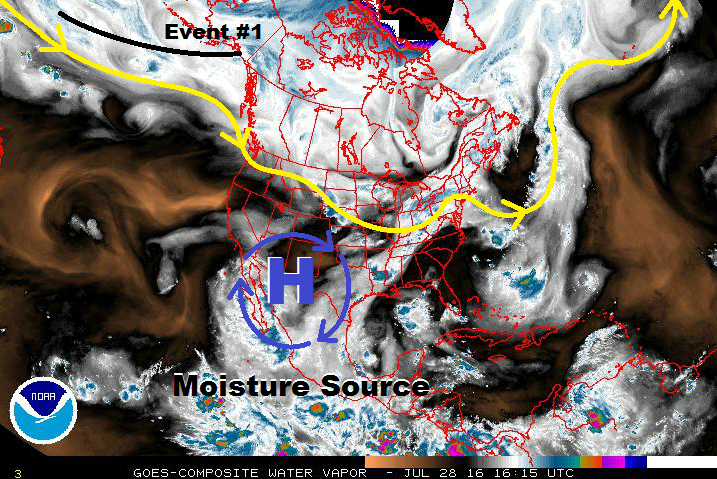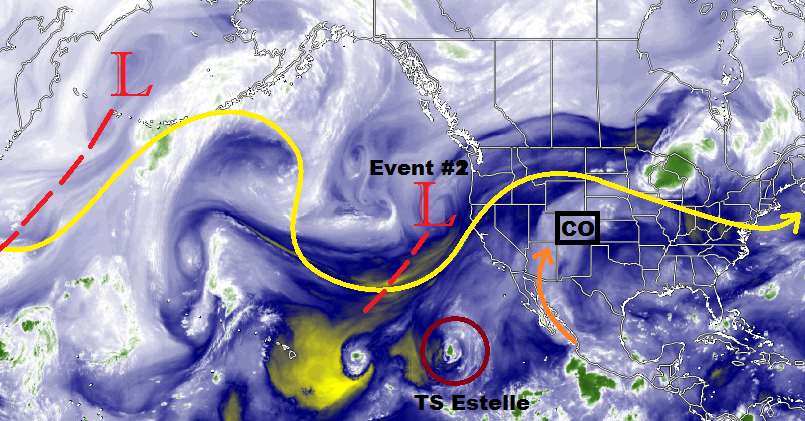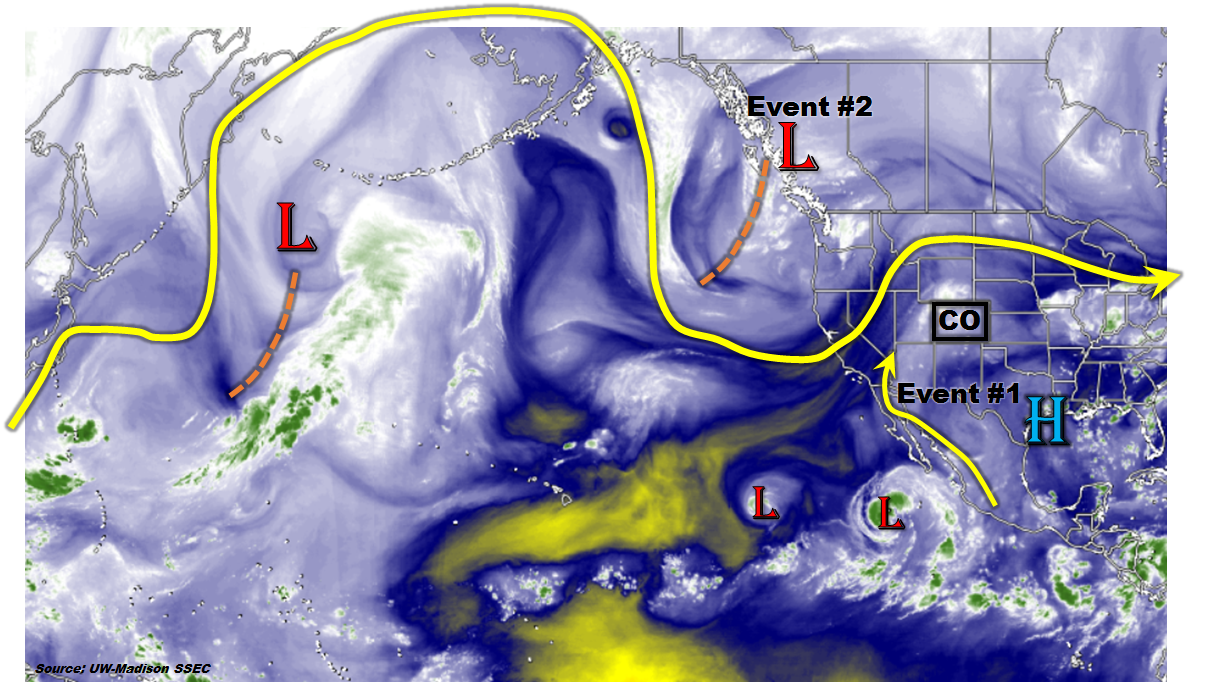Issue Date: 7/28/2016
Issue Time: 1:30 PM
Three events await Colorado over the next fifteen days, with two main culprits at which to point. The first culprit is the upper-level trough denoted as Event #1 in the water vapor image below. Within this trough, there are multiple low pressure circulations, and this will allow for the more poleward circulation to split from the main trough and become embedded in the main flow channel aloft. This will flatten the ridge, provide a shortwave disturbance to focus Event #1’s flood threat on Friday, and then exit to the east in a generally quick fashion. The more equatorward disturbance will instead dig along the West Coast and set the stage for Event #2, the early stages of the next monsoon surge. Event #2 receives no flood threat designation at this time, as there isn’t enough indication of a widespread heavy rain event. That doesn’t mean a flood threat will not present itself during the FTB, so stay tuned to daily updates.
Event #2 can be described as the precursory event to the main monsoon surge associated with Event #3 – the big show in this Flood Threat Outlook period. An influx of deep moisture from the south/southwest looks increasingly likely, providing plenty of fuel for multiple days of showers and thunderstorms capable of heavy rainfall. This is a fairly typical monsoon setup for August, and we have our eyes on it. We will continue to monitor this period as we move forward in time. After Event #3, the monsoon will slowly subside, leading to generally less coverage throughout the rest of the period. Temperatures will heat up during this time frame, likely above average for many locations, but such is August weather in Colorado.
Event #1: Friday (07-29-2016)
Elevated Flood Threat as Upslope Flow Reinforces Moisture
The upper-level high will get pushed eastward as the upper-level low digs along the West Coast, which will help a little extra mid-level moisture work its way into Colorado. Meanwhile, at the surface, upslope flow behind a cool front will reinforce moisture across eastern Colorado. This moisture influx will set the stage for a shortwave aloft to kick off scattered showers/thunderstorms across the Front Range/Southeast Mountains, working across the adjacent lower elevation. A moderately capped environment will exist across the far eastern plains, so expect less coverage there. Out west, it will remain dry and hot.
Event #2: Sunday (07-31-2016) through Wednesday (08-03-2016)
No Apparent Flood Threat as we Await More Details
Monsoon moisture will begin to increase across the state underneath the building ridge aloft, while a mid-/upper-level low spins over/near the Pacific NW. The moisture tap will not quite get unleashed, remaining steady or only slightly increasing each day. Pinning down the exact location of any disturbance aloft will be key in identifying any developing flood threats, but, at this time, there isn’t enough indication of a widespread heavy rain event to require a flood threat. We will watch this time frame closely in case moisture, instability, or upper-level support are better than currently advertised.
Event #3: Thursday (08-04-2016) through Tuesday (08-09-2016)
Elevated Flood Threat as Monsoon Tap Opens Up
The monsoon moisture tap will really open up during this time frame, with deep south-southwesterly flow aloft across the region. This influx in deep moisture will look to bring about a widespread heavy rain threat for multiple days. The longer the moisture tap remains open, the more concerning this period may potentially become due to antecedent conditions. This period may require an upgrade to high threat as details become clearer over the next few days. Stay tuned.









